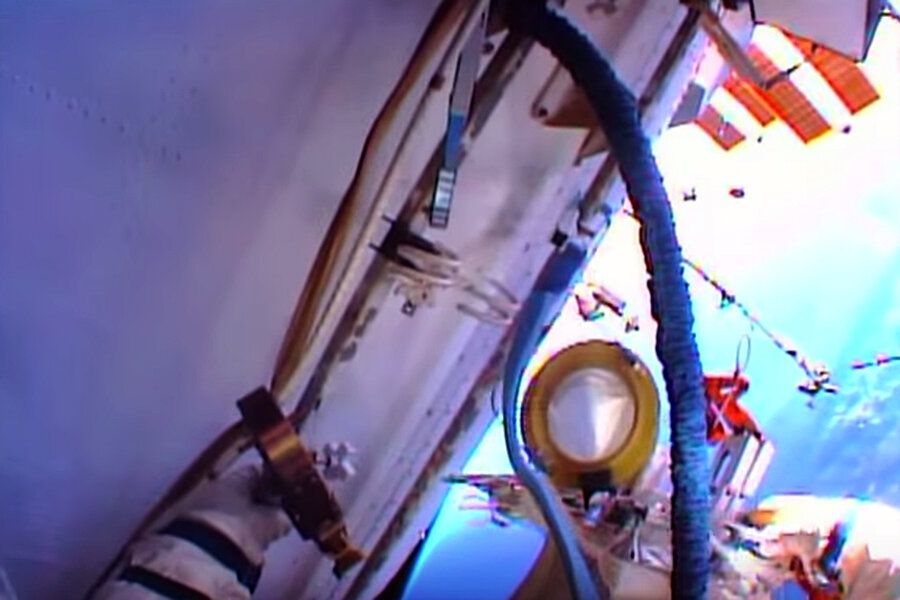How do you wash a window 250 miles above the Earth?
Loading...
Two cosmonauts successfully completed the 188th spacewalk on Monday, performing routine maintenance and assembling new equipment.
Station commander Gennady Padalka and flight engineer Mikhail Kornienko of the Russian Federal Space Agency scrubbed windows on the station’s Pirs module while floating 250 miles above the Earth’s surface during a 5 and a half hour spacewalk.
After rigging new equipment to help crew members maneuver outside the ISS, the cosmonauts photographed the Russian section of the complex.
They then washed a porthole window, getting rid of years of dirt left by exhaust fumes from visiting ships, and managed to finish the expedition 29 minutes ahead of schedule. Even simple the task of washing a window takes some special preparation when conducted on the space station.
"They developed a (cleaning) tool kit with two swabs with handles on them. The swabs are kind of a type of terry cloth," spacewalk specialist Devan Bolch said in a NASA video published before the walk.
"It's kind of similar to what you would use on your car headlights, when they get hazy, to clean them."
NASA live-streamed the spacewalk on its official channel Monday, but those who missed it can get a glimpse into the journey in this short video produced by the Canadian Broadcast Corporation.
The trip is the fourth ISS spacewalk this year and the tenth for Mr. Padalka, who has spent more time in space than any other person. His journeys amount to a total of 28 hours and 37 minutes, while Mr. Kornienko’s expeditions – this being his second – amount to 12 hours and 13 minutes.
As the two Russians worked outside the station, NASA astronauts Scott Kelly and Kjell Lindgren, along with Kimiya Yui of the Japan Aerospace Exploration Agency, sampled red romaine lettuce inside the ship.
The team tested the veggies as part of NASA’s efforts to provide sustainable food supplements for future space-walkers, notably those who will embark to Mars.
"(This) marks a milestone, the first space-grown lettuce that is actually consumed in orbit by ISS crew," said NASA mission commentator Rob Navias.
According to NASA, the remaining lettuce will be frozen on the station until it can be returned to Earth for scientific analysis.






